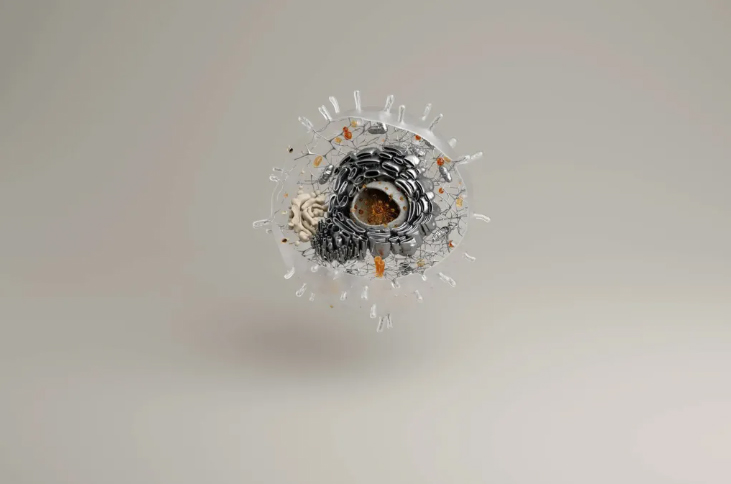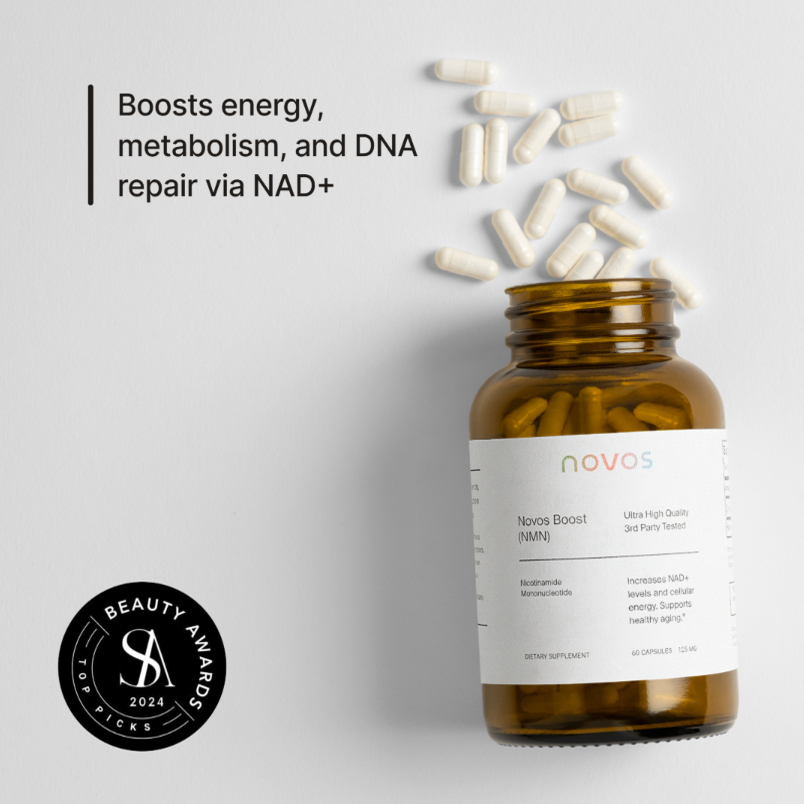
Table of Contents
The Role of Senescent Cells in Aging: Causes, Effects, and Potential Interventions
Aging is a multifaceted biological process shaped by genetic, environmental, and cellular factors. One of the primary contributors to aging is cellular senescence, a state where cells lose their ability to divide and function and perform their functions. Effectively. Senescent cells accumulate over time, contributing to various age-related conditions and functional decline. Understanding the causes, effects, and potential interventions for senescent cells is crucial for developing anti-aging strategies and promoting longevity.

Book Your Free Consultation Today Or Call (647) 560-9233
By providing your phone number you agree to receive informational text messages from laserskin.ca. Consent is not a condition of purchase. Message frequency will vary. Msg & data rates may apply. Reply HELP for help or STOP to cancel.
What Are Senescent Cells?
Senescent cells are damaged or aged cells that have permanently stopped dividing. Unlike apoptotic cells, which undergo programmed cell death, senescent cells persist in the body and secrete inflammatory molecules, growth factors, and enzymes. This phenomenon, known as the senescence-associated secretory phenotype (SASP), leads to chronic inflammation and tissue dysfunction, accelerating aging.
Cellular senescence occurs due to various stressors, including DNA damage, oxidative stress, telomere shortening, and mitochondrial dysfunction. Although senescence initially acts as a defence mechanism to prevent damaged cells from proliferating uncontrollably, its long-term accumulation has detrimental effects on overall health and aging.
Causes of Cellular Senescence
Several biological mechanisms contribute to the accumulation of senescent cells over time:
- Telomere Shortening
Telomeres are unique protective structures located at the ends of chromosomes that prevent DNA damage. With each cell division, telomeres gradually shorten. When telomeres become critically short, the cell undergoes senescence to prevent genomic instability. This natural limit, known as the Hayflick limit, is one of the primary drivers of aging and cellular dysfunction.
- DNA Damage and Genomic Instability
Cells are continuously subjected to multiple sources of DNA damage, such as UV radiation, pollution, and metabolic byproducts. Inefficient DNA repair mechanisms lead to genomic instability, triggering the activation of tumour suppressor pathways that push cells into a senescent state.
- Oxidative Stress and Mitochondrial Dysfunction
Mitochondria, commonly known as the cell’s powerhouse, are essential for energy production. However, they also generate reactive oxygen species (ROS) as byproducts. Excessive ROS levels lead to oxidative stress, damaging cellular components, including DNA, proteins, and lipids. Over time, this damage contributes to mitochondrial dysfunction and the induction of cellular senescence.
- Epigenetic Alterations
Epigenetic modifications, including DNA methylation and histone alterations, control gene expression without changing the fundamental DNA sequence. These changes accumulate with age, leading to dysregulated cellular function and the activation of senescence-related pathways.
- Chronic Inflammation
The SASP secreted by senescent cells contributes to chronic low-grade inflammation, commonly referred to as inflammation. This inflammatory state disrupts tissue homeostasis, weakens immune function, and exacerbates age-related diseases, including cardiovascular disease, neurodegenerative disorders, and metabolic syndromes.
Effects of Senescent Cells on Aging and Health
While senescent cells play a protective role in preventing the spread of damaged or potentially cancerous cells, their long-term presence is detrimental to overall health. The accumulation of senescent cells contributes to multiple age-related conditions, including:
- Neurodegenerative Diseases
Senescent cells are implicated in neurodegenerative disorders such as Alzheimer’s and Parkinson’s disease. Their presence in the brain contributes to neuroinflammation, synaptic dysfunction, and impaired cognitive function.
- Cardiovascular Disease
Endothelial cell senescence is partly attributed to aging-related vascular dysfunction. Senescent cells in blood vessels contribute to arterial stiffness, reduced elasticity, and increased risk of hypertension, atherosclerosis, and heart disease.
- Osteoarthritis and Musculoskeletal Decline
Senescent cells accumulate in joint tissues, leading to cartilage degeneration, inflammation, and increased susceptibility to osteoarthritis. Additionally, muscle stem cell senescence contributes to sarcopenia, the gradual reduction in muscle mass and strength that accompanies aging..
- Metabolic Disorders
Senescent cells impair insulin signalling and pancreatic function, leading to metabolic imbalances and the development of type 2 diabetes. Chronic inflammation from SASP further disrupts metabolic homeostasis, leading to obesity and insulin resistance.
- Weakened Immune Function
With aging, immune cells also undergo senescence, reducing their ability to detect and eliminate senescent or damaged cells. This decline in immune surveillance leads to increased susceptibility to infections, cancer, and autoimmune diseases.
Potential Interventions to Reduce Senescent Cell Burden
Given the detrimental impact of senescent cells on aging and health, researchers have explored various interventions to mitigate their effects and promote longevity. These interventions include lifestyle modifications, pharmacological approaches, and emerging therapies.
- Senolytics: Targeted Senescent Cell Clearance
Senolytic drugs are compounds designed to selectively eliminate senescent cells without harming healthy cells. Some of the most studied analytics include:
- Dasatinib and Quercetin: A combination that has shown promise in reducing senescent cell burden and improving physical function in aged individuals.
- Fisetin: A flavonoid with senolytic properties that has demonstrated lifespan-extending effects in animal studies.
- Navitoclax: An experimental senolytic drug that targets anti-apoptotic proteins in senescent cells.
- Senomorphics: Modulating the SASP
Xenomorphic compounds do not eliminate senescent cells but reduce the harmful effects of SASP. These include:
- Metformin: A widely used diabetes drug that has been shown to reduce inflammation and improve mitochondrial function.
- Rapamycin: An mTOR inhibitor that extends lifespan and modulates SASP activity.
- Resveratrol: A polyphenol possessing antioxidant and anti-inflammatory properties that support healthy aging.
- Caloric Restriction and Fasting
Caloric restriction and intermittent fasting have demonstrated the ability to delay aging by reducing oxidative stress, enhancing autophagy, and improving mitochondrial function. These dietary strategies help clear damaged cells and slow the buildup of senescent cells over time.
- Exercise and Physical Activity
Consistent physical activity has been associated with decreased cellular senescence and improved mitochondrial function. Cardio workouts, resistance training, and high-intensity interval training (HIIT) enhance cellular resilience and delay the onset of age-related diseases.
- Stem Cell Therapy and Regenerative Medicine
Innovative treatments, including stem cell transplantation and tissue engineering, aim to replace aged or damaged cells with healthy, functional ones. These approaches promise to mitigate the effects of senescence-related diseases and promote tissue regeneration.
Conclusion
Cellular senescence plays a crucial influence on aging and the onset of age-related diseases. Although senescence is a defence mechanism against uncontrolled cell division, its accumulation contributes to chronic inflammation, tissue dysfunction, and degenerative conditions. Understanding the causes and effects of senescent cells provides valuable insights into potential anti-aging interventions. From senolytic drugs and dietary strategies to exercise and regenerative medicine, various approaches are being explored to mitigate the impact of senescent cells and promote healthy aging. Future research may unlock new therapeutic avenues to extend health span and improve the quality of life in aging populations.
More info on NOVOR Core
More info on NOVOR Boost
